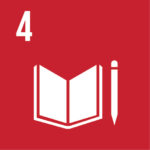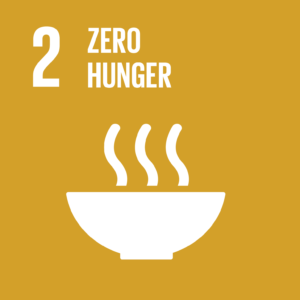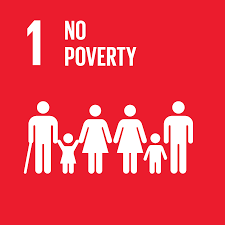By Oscar Mata
No matter how much many of us would wish it, the world is not a happy place. Far from it, in fact. Poverty, hunger, and a lack of safety are issues billions of people struggle with daily. Does this mean, then, that our world really is doomed for failure?
Maybe not . . . because the world is also constantly improving. For example, in 1990 the United Nations agreed on a set of goals, the Millennium Development Goals (MDGs), with the aim of halving the percent of our population who live in extreme poverty by 2015.
Not many expected the U.N. to accomplish this feat, because approximately 36% of the world lived in extreme poverty in 1990. Reducing that amount to even 20% in 15 years seemed astounding to much of the world. Thus, to no one’s surprise, by 2015 the U.N. didn’t meet their goal . . . instead, they exceeded it! By the end of 2015, the percent of the population who lived in extreme poverty was only 12%, , a third of what it was only 15 years prior.
With an accomplishment this monumental under their belt, the U.N. proposed a new set of goals, this time far more ambitious and optimistic. In their annual meeting of 2015, the U.N. agreed on the Sustainable Development Goals (SDGs). These 17 different goals were what the U.N. believed would be the driving factors for a much improved world by 2030.
The problem with these goals is that the U.N. has yet to devise a proper way to implement them. This is completely understandable considering how broad some of these goals really are.
The 17 SDGs are so broad they practically encompass all of everyday life. In fact, each goal has so many layers within it that it’s a wonder the U.N. didn’t just expand each subsection of the goals into their own section entirely.
Even so, each goal is equally important to ensuring a better tomorrow. For this reason, it’s vital to identify the main aim and targets of each goal to understand how to meet them.
SDG#1 – No Poverty: A continuation from the MDGs, to reduce the percent of the world living in extreme poverty to less than 3%.
SDG#2 – Zero Hunger: To ensure all people have access to safe, healthy food; as well as eradicating hunger and malnutrition entirely.
SDG#3 – Good Health and Well-Being: Achieve universal health coverage and dramatically increase access to healthcare; as well as dramatically decreasing the amount of preventable deaths.

SDG#4 – Quality Education: Ensure everyone regardless of gender, race, or location is given access to free quality primary and secondary education, along with access to daycare and pre-primary education.

SDG#5 – Gender Equality: Eradicate all forms of discrimination against women; ensure women have access to the same privileges as men everywhere; ensure access to sexual and reproductive health help universally.
SDG#6 – Clean Water and Sanitation: Achieve universal access to affordable and safe water, equitable sanitation and hygiene.
SDG#7 – Affordable and Clean Energy: Guarantee universal access to reliable, affordable energy services; Double the rate of improvement in energy efficiency and increase international cooperation to do so.
SDG#8 – Decent Work and Economic Growth: Eradicate forced labour, modern slavery, human trafficking, and the worse forms of child labour; create more jobs, and increase workers rights.
SDG#9 – Industry, Innovation, and Infrastructure: Develop reliable, sustainable infrastructure to support economic development and well-being; notably raise GDP, doubling it for the least developed countries; enhance scientific research in all countries.
SDG#10 – Reduced Inequalities: Promote inclusion of all kinds for all, regardless of age, sex, orgin, race, ethnicity, religion, disability, and wealth. Ensure equal opportunities for all people.
SDG#11- Sustainable Cities and Communities. Ensure all people have access to safe, affordable housing; provide accessible, affordable transportation for all.
SDG#12 – Responsible Consumption and Production: Manage efficient use of natural resources; reduce waste generation; remove market distortions of inefficient fossil fuels.
SDG#13 – Climate Action: Promote climate change measures into national policies; reinforce resilience to climate related hazards in all countries.
SDG#14 – Life Below Water: Drastically reduce marine pollution; regulate harvesting and end overfishing; increase the conservation of ocean resources.
SDG#15 – Life on Land. Conserve, restore, and sustainably use ecosystems and their services of all types; Combat desertification and prevent the extinction of endangered species; Eliminate poaching and trafficking of protected species of plants.
SDG#16 – Peace, Justice And Strong Institutions. Marginally reduce all forms of violence everywhere; end abuse, trafficking and torure of children; enforce desegregation laws and policies; promote peaceful relations among countries.
SDG#17 – Partnerships for the Goals. Assist developing countries achieve the goals; improve worldwide access to technology; Establish a universal, non-discriminatory and equitable multilateral trading system.
Measuring Progress Towards the SDG’s
Annually, the UN releases reports on their progress toward reaching the SDG’s through graphs, data tables, and long essays on statistical analysis. However, there exists a better method to monitor the SDG’s and global wellbeing as a whole. The Social Progress Index was established to replace Gross Domestic Product as the measure for a nation’s worth. Rather than compare the monetary value of all services and goods produced within countries, the Social Progress Index questions what really matters to the common people.

Social Progress measures the capacity of a society to:
3. Create the conditions for all individuals to reach their full potential.
The following three measures form the main categories of the Social Progress Index: Basic Human Needs, Foundations of Wellbeing, and Opportunity. Together, the three categories are divided into 12 components, comprised of 51 primary indicators, intended to calculate an aggregate score out of 100.
It’s estimated that in order to achieve the SDGs, the world would have to achieve an average of 75 on the Social Progress Index.
Now, this may seem somewhat achievable at first, considering that at the end of 2015 the global Social Progress score was 61.00. However, four years later in 2019, the global score rose only by a little over 3 points, totalling 64.75.
At this rate, it seems impossible that the world will reach the SDGs by 2030. Even reaching a global Social Progress grade of 70 seemsoptimistic. It’s odd that this is the case considering how much money is being donated by large corporations and fundraisers in order to meet the goals. Which begs the question, why has so little progress has been made with so much financial backing?
The Problem
With 10 years remaining, a new approach must be made in order to achieve the SDGs. So far, the U.N. has spent billions of dollars on financing the SDGs with limited results. Money simply can’t solve all of the problems that the SDGs are trying to handle. For example, during their annual executive summary, the Social Progress Imperative published a graph comparing the Social Progress score to Gross Domestic Product for various countries.
What this graph confirms is that more money doesn’t necessarily mean a higher social progress score. In fact, in many cases some countries with a lower GDP scored higher on the Social Progress Index. Why are countries like Qatar, with the highest GDP per capita in the world getting outscored by Costa Rica, a country with less than one fourth of Qatar’s GDP per capita? The simple answer is, money doesn’t solve everything.
Sure, with money, meeting the components within Basic Human Needs is simple, but the same can’t be said for the other two categories. Money can help with the components of Foundations of Wellbeing somewhat, but only to a certain degree. For example, environmental quality, as well as health and wellness, are components that can only be met through a rigorous implementation of laws and regulations.
Lastly, money has very little influence over all of the components of opportunity. Each component from that category is influenced directly by the citizens of that country.
The easy victories in achieving the SDGs are already won. All SDGs which can be solved by a cash infusion either have now been met, or are already expected to be met by 2030. Currently, the same can’t be said for most SDGs involving opportunity. In fact, it’s gotten to the point where the global average for the Social Progress Index in 2019 under Opportunity is only 51.52, a far cry from the 75 needed to meet the SDGs. For this reason, in order to reach the SDGs by 2030, a new strategy must be tried to improve Opportunity, the one category least affected by cash infusions.
My Solution.
In 2015, 193 world leaders agreed upon the SDGs. These leaders swore to the world to carry out their duties and meet these goals by 2030. Even if some leaders feigned ignorance of their duties, their obligation still stands. It’s up to citizens around the world to remind their governments of what they agreed to in 2015.
Issues related to personal rights, freedom of choice, inclusiveness, and access to advanced education, are all components only governments and progressive communities can resolve. By institutionalizing laws against racism and discrimination due to gender, sexuality, and race, governments can improve inclusiveness. By establishing new schools that are accessible and affordable to all, governments can improve access to education. By simply granting their citizens the civil rights they deserve merely as human beings wishing to live a fulfilling life, governments can improve their regional scores. Governments around the globe committed to all these goals in 2015 when they agreed upon the SDGs. It’s high time we should remind them to follow-through on their promises by 2030.



